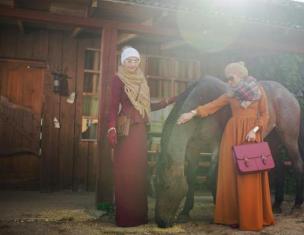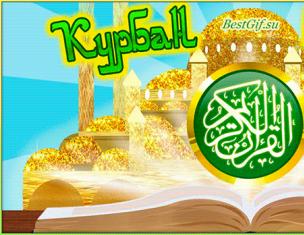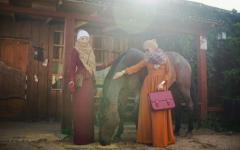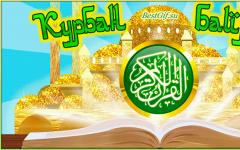
Snowflakes are the easiest way to decorate your home for the New Year. How to cut , we have already shown you. Can do, can do, and even !
Today you can learn how to make graceful quilling snowflakes!

We will need:
strips of colored paper 5 mm wide different shades blue
(office or special paper for quilling)
toothpick or narrow awl
ruler with holes;
PVA glue.
for the first snowflake
54 strips of dark blue paper
36 strips of light blue paper
for the second snowflake
51 strips of dark blue paper
39 strips of light blue paper.
you can buy ready-made kits for quilling, or you can cut them yourself from A4 colored paper, as we did. To make snowflakes picturesque, we will use stripes of two colors in each element.
We will fold the snowflakes according to the scheme, given that:

For a free roll and one large dense roll, you will need three strips of paper - 2 dark blue and 1 light blue. blue color,
For 1 small roll, you will need one strip, made up of halves of different colors.
So, cut the paper and start twisting the rolls.
Dense rolls will ensure the strength of a snowflake made of fragile paper at first glance. To do this, it is convenient to use a simple toothpick.

It is convenient to adjust the diameter of the rolls using a special ruler by placing a roll that has not yet been glued into the desired cell - in it it will “unwind” to the desired diameter. Rolls can be made loose (free-rolls) or dense. We will need both those and other dense rolls.

Free roll: we wind the strips (previously glued end-to-end) onto a toothpick, holding them with our fingers on both sides so that our roll is even. Then, after obtaining the desired diameter (using a ruler), carefully glue the edge.

Tight roll glue without loosening.
For making diamonds from free-rolls, first we squeeze them from two sides, as shown in the photo on the left, and then we do the same operation, forming two other corners - this action will give the roll a diamond shape.
We arm ourselves with glue and begin to glue the elements, starting from the center .
It is most convenient to do this on any coating, such as polyethylene, to which our snowflake will not stick. You can, for example, print out the diagram and put it under a transparent file so that the future snowflake is as symmetrical as possible.
We are left with the most exciting and creative work - decorating the Christmas tree with snowflakes!
Use your imagination a little and your snowflakes will not look alike, just like their real girlfriends!














In the technique of quilling, you can do beautiful snowflakes with which you can decorate the Christmas tree, New Year's interior, new year card, or you can make a whole garland of such snowflakes.
Quilling does not require any unusual materials and many complex tools. It is important to stock up on the right paper and have one single curling tool. paper strips. In Europe, a plastic, wooden or metal stick with a split end is used for this. It is convenient for many to wind the paper simply on the tip of an awl or darning needle.
When creating these snowflakes, basic shapes were used: a drop, a leaf, an eye, a square and other basic shapes. You can read about how to make these basic shapes in the article: Quilling for beginners
DIY Christmas snowflake
Would need: paper tapes white color(blue), thin awl (toothpick or quilling tool), woolen thread, glue.
Making a snowflake
■ Make the required number of “drop”, “eye” and “month” figures from white (blue) ribbons.
.jpg)
.jpg)
■ Shape the pieces to make a snowflake.
.jpg)
.jpg)
DIY fairy tale snowflake
Would need: white (blue) paper ribbons, thin awl, glue.
■ Wrap the tip of the awl with the edge of the ribbon. To achieve different size shapes, use longer or shorter ribbons.
.jpg)
■ After wrapping one third of the strip, remove it from the awl and twist the rest of the strip with your hands.
■ Form a figure from the resulting spiral, giving it the desired shape with your fingers. Secure the figure with glue.
■ Make the required number of “loose spiral” and “eye” shapes from white ribbons.

■ Take white or blue ribbons. Twist their ends, forming the shapes of "heart", "curl" and "letter S".

■ Glue the resulting parts, forming a snowflake.

❧ Quilling is an opportunity to see the unusual possibilities of plain paper.
Paper snowflakes - traditional Christmas decoration. Most often they are cut out by stencils. You can create more elegant and unusual jewelry in fashion technology called quilling. Complex-looking compositions are assembled from simple elements - a coil, a drop, a leaf, a ring, a curl. It's easy and very exciting.
Video master class Snowflake in the technique of clearing
For this you will need:
- Paper
- Long ruler and simple pencil
- Scissors
- Toothpick, skewer or knitting needle
- PVA glue
- Fine brush
- School stencil with round holes of different sizes
- Tweezers
There are ready-made quilling kits in stores. They have already cut strips of different colors and torsion tools.
Snowflake quilling, Everything is very simple!
A sheet of paper must be marked into long strips of the same width and cut. To make a coil, you need to tightly wind a strip of paper onto a knitting needle, carefully remove it, dissolve it to the desired diameter using a stencil, and fix the tip with glue. If the end is left free, it will be a curl. A drop will turn out if the finished coil is slightly pinched with your fingers on one side. The leaf is pinched on both sides. Similarly, triangles and rhombuses are formed. To get a ring, you need to wind the strip onto a thick knitting needle or pencil and glue the free end, and then remove the finished element.
A snowflake can be made according to the model ...

To do this, you need to count the number of parts in the sample, wind them up, and then just assemble the desired composition. First, glue the elements that form the middle of the future snowflake with glue, and then glue the other parts in sequence, moving from the center to the edges. Better choose simple model to start, and then try more complex schemes.
... and you can improvise!
Invent a pattern on the go, connect the elements in random order, glue them on top of each other to add volume. Use colored or craft paper, sequins and beads. To fantasize and create unique lace masterpieces.
Especially beautiful snowflake can be inserted into a deep frame and hung on the wall. In a frame under glass, a fragile creation will retain its beauty for long time, and will create a magical festive atmosphere in the House.
Master Class. DIY paper snowflake
Tolkacheva Galina Alexandrovna, educator MBDOU Kindergarten combined type No. 28 "Mishutka", art. Voronezhskaya, Ust-Labinsky district.
This master class is designed for preschool teachers, teachers and parents.
Purpose: Christmas decorations, gift, interior design.
Target: make a paper snowflake using quilling technique.
Tasks: Introduce quilling, with its basic forms, teach how to make the basic elements of quilling from paper and create a composition from them in the form of a snowflake;
Develop attention, memory, imagination, Creative skills, fine motor skills hands and eye;
Cultivate accuracy, diligence, patience.
Material for work: for work you need white office paper, cut into strips 5 mm wide and 30 cm long, scissors, PVA glue, a stencil ruler with circle shapes, a toothpick, a stationery knife, a wooden board, a template with rays printed and laminated with adhesive tape, basting needles, thread for Christmas toys.

Quilling is the art of twisting long and narrow strips of paper into spirals, modifying their shape and composing voluminous and flat compositions from the resulting parts. Using the quilling technique, postcards, panels and three-dimensional figures like snowflakes.
Sequence of work:
First, prepare a tool for winding paper strips: take a toothpick, cut off the sharp tip with a clerical knife and make a crevice 5-6 mm deep.

To make this snowflake you need to make the following
basic paper quilling elements:
1. Drop

Take a strip of paper, insert the tip into the crevice of the toothpick and wind evenly, helping with the pads of your fingers.

Place the resulting spiral in the circle of the ruler (I have a diameter of 1.5 cm) so that the elements to be made are the same size and let it unwind.

Take a toothpick and, moving the center of the spiral to the edge of the template circle, carefully remove it.

Squeeze one end of it with your thumb and forefinger so that the spiral takes the form of a drop. Glue the tip with a drop of glue.

We need 12 such fragments.

Take 6 teardrop-shaped pieces for the center of the snowflake. Place them on the template with a narrow edge to each other along the 6 rays of the snowflake.

At the points of contact of the elements, glue them with PVA glue. To keep the elements motionless, first fix them on the template with pins, do not forget to put the template on a wooden board.

2. Eye.

Make the next element. Take a strip of paper, insert the tip into the crevice of a toothpick and wind the strip all the way through. Place the spiral on the circle of the ruler, and let it unwind along the diameter of the circle.
Carefully remove it so that the spiral does not unwind and press the spiral from both ends with the index and thumbs both hands, make sure that the center does not shift.

You need to make 6 such fragments.

Place them between the elements of the drop, fix with pins and at the points of contact of the parts, apply PVA glue.

3. Heart.

To make this element, you will need half a strip, so take a strip, fold it in half and cut it with scissors at the fold.

Fold half in half. Twist a piece of tape towards the center of the fold on one side, and then do the same on the other side. Roll towards each other.

You need to make 6 such details.

Place the hearts with open twisted ends between the eye elements. Glue where the paper touches each other.

4. Curl.

Take a strip of paper, lightly mark the middle of the strip without making a crease. Twist the ends to the middle, but in different directions. Loosen the curl a little.
Make 12 of these elements.

Glue the curls in pairs at the points of contact, placing one end directed towards each other, the other away from each other.

Place the resulting elements on the snowflake between the hearts, fix with pins, glue.

Finally, decorate the snowflake with the remaining 6 teardrop-shaped elements, gluing them at the ends of the curl.

Take the thread and make a loop. The snowflake is ready.

Light fluff.
Silver and glitter
white snowflakes. (A. Grishin)
Ideas for creativity:
The quilling technique appeared quite a long time ago, about 500 years ago. For the first time, it began to appear in European countries. This technique involves twisting strips of paper and then gluing them together. Further, various patterns and crafts are made up of these swirling strips. Folded stripes form both closed and open shapes. Patterns are formed from simple figures, which can be both simple and whole works of art. Patterns in this technique are very airy and lacy. Therefore, today we will consider how to make an original quilling snowflake step by step. We will make an openwork snowflake that can be hung on Christmas tree or near the desktop, so that it reminds us that the holidays have come and we need to devote more time to relatives and rest.
Learning the basics of quilling technique: snowflake step by step for beginners
For its manufacture we need:- Toothpick;
- Tweezers;
- Scissors;
- Glue;
- Paper.
Let's start making a large snowflake using the quilling technique.
We take a landscape sheet and draw stripes on it with a pencil and a ruler. Make sure the lines are even. Then we cut the sheet along the drawn lines. A clerical knife can help us with this.
We take a toothpick and apply it to the edge of the strip, and then we wind the strip onto the toothpick turn by turn.
We fix the end of the strip and carefully remove the resulting roll from the toothpick.
If you do not quite understand the description of this process - do not worry, below will be presented to your attention a photo that shows step by step the process of creating basic elements.

We make another such blank, only now we squeeze one edge with our fingers. As a result of this action, we get a droplet-like element. For our composition, we repeat the above manipulations five more times.
Then we glue the resulting 6 droplets to the first figure.
Again we take a toothpick and wind more rolls and now we squeeze it on both sides so that the result is a figure in the form of an eye.
Between the petals-rays, we glue the parts we just made.
Now we take 3 strips, bend them in half and cut them, we get 6 short strips.
We miss them in the way described above.
On each tip of the part we glue a figure in the shape of an eye.
We make 6 more coils and bend them with our fingers until we get a square shape.
We glue them with the top to a large coil.
Now we wind a strip of paper around a pencil, glue the end of the paper and remove it from the pencil. This detail will act as a loop for hanging it on Christmas trees, or on whatever your heart desires.
Glue it to one of the tops of our snowflake. We stretch a ribbon or thread in the resulting ring.

As with any activity in quilling, of course, there are certain clichés or, in other words, basic elements. Let's see what they look like. There are different types of coils. Let's look at the most popular ones.
- An open coil is when the end of the strip is not attached to its body.
- Closed coil - the end of the strip is fixed, forming a closed loop.
- Tight coil - the strip is stretched very strongly throughout the twisting and tightly fixed, such a coil looks like a knot on an openwork background.
- Large coil - when creating, we use an ordinary pencil or any other thick core or frame for winding.
- Drop - press one end with your fingers.
- Eye - press both ends.
- Petal - squeeze with your fingers and bend on one side.
- Sheet - squeeze on both sides and make waves.
- Curls - fold the strip in half and wind the ends in different directions.
You can see various options for snowflake schemes in the photo below:

Quilling is the art of creating openwork patterns from paper. Translated from English quill - "bird feather". The brainchild of your creativity can be beautiful airy lace completely transparent patterns. You can create amazing compositions full of rainbow colors that evoke the mood you need. Pictures made in this technique will fit into any interior: from Gothic to high-tech, the flexibility of this art allows you to combine rigor and elegance, colorful or gloomy tones, from flowers to portraits, it depends only on the desires and scale of work: all this is possible talk about quilling. You can not only spend time with pleasure, but also for the benefit of both your interior and your wallet, because quality work has a high price.
Video selection on the topic of the article









